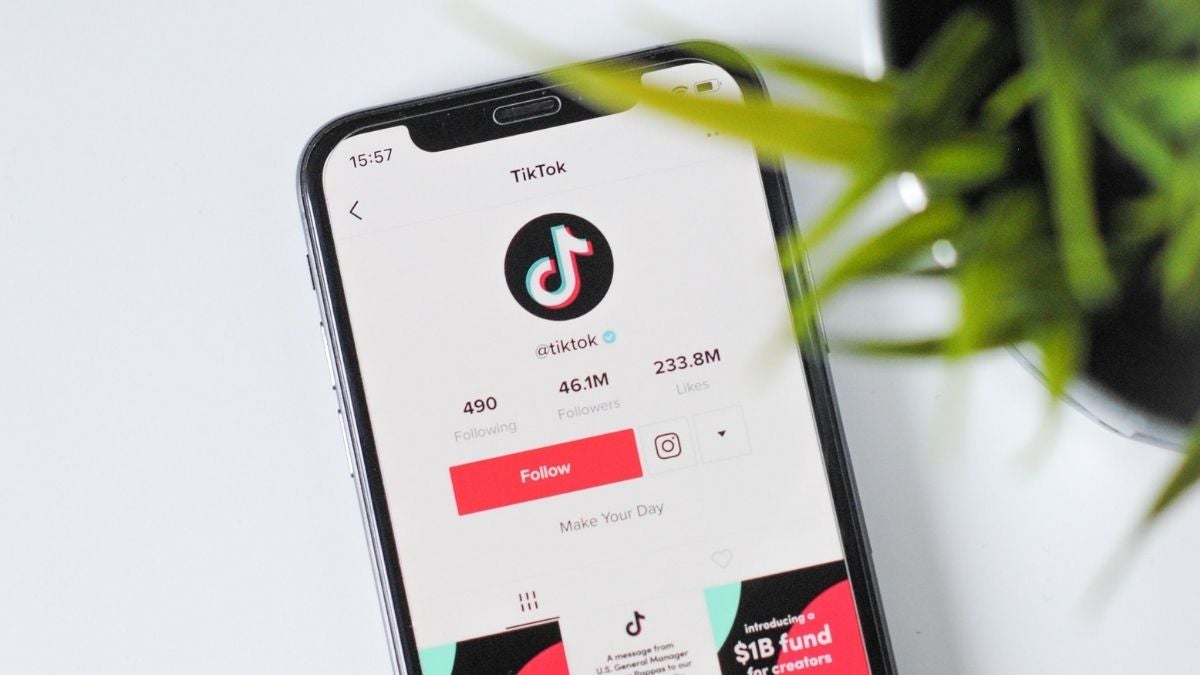
The rapid shift to privacy-centric technology is a major challenge for the digital ad world. As tech giants Apple and Google make sweeping changes to the core of their platforms, how can brands continue to effectively target users and measure ad campaigns?
The Apple and Google privacy changes have been in the making for over two years. They started to become a reality last year when Apple released its iOS 14.5 software. This asked consumers to actively opt-in to tracking through the identifier for advertisers (IDFA) – the unique code assigned to each person’s iPhone. Meanwhile, Google will kill third-party cookies in its market-leading Chrome browser by 2023.
Both changes mark a huge shift for marketers. They’re used to being able to track users – albeit anonymously – across platforms and devices, before serving them relevant ads. As Google and Apple move away from what’s now seen as invasive tracking, brand advertisers are being forced to completely rethink their strategies.
But the path to privacy hasn’t been smooth. Google’s third-party cookie changes have already faced obstacles. Launched last year, the firm’s original Federated Learning of Cohorts (FLoC) alternative failed after opposition from regulators and privacy advocates, who said it risked uniquely identifying users.
Google quickly responded with a new solution, Topics, which is seen as more privacy-centric because it allows advertisers to broadly serve content based on a user’s interests, rather than the specific sites they visit.
Measurement challenges
Topics is viewed as a win for consumers. However, Google’s move away from third-party cookies – the trackers that follow people around the web – will challenge the brands that once relied upon them. One of the biggest obstacles will be measurement.
“We use cookies to track how many people have seen an ad and the number of times they have viewed it,” says Andrew Spurrier-Dawes, head of precision at Wavemaker EMEA. “We do not want people to see our ad so often it becomes irritating, and these changes will make it harder to do that automatically; we have to build it into our planning instead.”
The demise of third-party cookies and move to Topics means brand advertisers will lose granularity, says Ben Foster, managing partner, digital at the Kite Factory. “We won’t know about a certain product, just a whole range.”
According to Foster, Google’s Topics will make retargeting a challenge and response rates will be impacted. “Currently, when someone engages with your content, you can build a bespoke audience and target them with another message. That doesn’t exist under Topics,” he says. “Topics are predefined segments and not bespoke, so the change is not supporting that retargeting, and you’ll get lower response rates. You will also have to pivot your strategy to continue the conversation with people. You can’t bring them back after initial research to purchase.”
With the loss of granularity, companies will need to obtain compliant data capture through their websites, says Foster: for example, encouraging people to share their email address.
So where does this leave the advertiser? Some in the industry are positive about the changes. Solutions like Topics can be used in conjunction with contextual content, says Alexis Faulkner, chief digital officer at Mindshare UK. First-party cookies – which track users within the website they’re visiting – will also continue to play a key role through options such as social media platforms, which are still able to collect large amounts of data.
At the same time, there’s an opportunity for traditional media like TV, radio and out of home (such as billboards and bus shelters) to “remind advertisers of their various strengths” as they compete for a bigger share of ad spend, Faulkner says.
Topics enables a move to contextual advertising, agrees Lorraine Barber-Miller, chief marketing and e-commerce officer at Philips. “Brands need to reconnect their marketing with their values and where they want to advertise. In many ways, third-party cookies made it tempting to abandon the contextual approach in favour of chasing clicks around the internet and blindly trusting algorithms with the data they collected.”
Targeting consumers in a new digital world

The future of advertising is rapidly shifting in line with digital privacy changes. It’s now key to unlock first-party data to offer value for consumers, major brands say. Heineken USA has changed the way it thinks about data as a part of the customer journey.
“While we knew the demise of third-party cookies would have a significant impact on how we advertise and measure the effectiveness of our campaigns, we realised it would be the push to build relationships directly with consumers and provide them with additional value in exchange for data,” says Rebekah Kennedy, director, consumer data strategy at The Heineken Company. “With third party data becoming less reliable – and Apple and Google limiting cross-app tracking – we needed to start collecting and using consented first party data to future-proof our business.”
Heineken USA had to rethink its data management platform (DMP), which it used for targeted advertising. “Since DMPs rely heavily on third-party cookies, we needed a way to make up for the data we would lose when cookies are phased out,” says Kennedy. “With DMPs, match rates were already sub-par, and we wanted to test building lookalike audiences with first-party data.”
Using its customer data platform BlueConic, Heineken USA started to build up first-party data through its direct-to-consumer channels such as its website and offline events. As a result, the alcohol brand has been able to analyse its audience to better understand, for example, previous events they’ve attended and drinks they’ve sampled, informing engagement efforts. “We’re continuing to test cookie-less solutions and refining our approach based on this,” says Kennedy.
Pete Jeavons, marketing communications director at BT Consumer, says the firm has revised its media measurement methodologies by using adtech to get a better understanding of marketing return on investment. “With less tracking, the econometric models we use to give us short and long-term reads on advertising performance are more important than ever before. We also now need more specific media experiments – such as A/B tests [which gauge people’s responses to different variants] – to prove the value of new platforms, publishers or tactics.”
Measurement remains “a tough nut to crack”, says Barber-Miller. While brands can use new strategies to reach audiences, basics like cross-channel reach and frequency capping will “have to be completely revised”.
Barber-Miller says first-party data “has been the forefront of our strategy for quite some time now”, and Philips has been investing in marketing mix modelling.
The mobile privacy shift
While the demise of third-party cookies marks a huge adjustment in web advertising, it’s accompanied by a similar shift in mobile towards privacy-focused solutions. This is being led by iPhone maker Apple, which has already implemented its App Tracking Transparency iOS features that ban tracking between apps and websites. The move has hit companies hard, particularly ad giant Facebook, which says it will lose $10bn due to the changes.
It’s a serious matter. According to estimates, around 75% of Apple users are opting out from tracking, preventing Facebook from measuring the effectiveness of campaigns.
Reducing Facebook’s power to micro-target its user base comes as “a huge financial blow”, says Jake Moore, global cybersecurity advisor at security company ESET. “Facebook offers a wealth of user data, which is a goldmine for advertisers. By effectively turning off the IDFA and limiting the ability for businesses to measure performance, Facebook has and will be seriously affected, especially when coupled with a recent reduction in active daily users on the platform.”
Following the Apple privacy changes, advertisers can no longer see when someone was served an ad on Facebook and went to the brand’s website to buy a product. This makes it harder for advertisers to target users on Facebook and its sister site Instagram. “If people don’t allow Facebook to collect the IDFA, it doesn’t know if an ad has resulted in someone completing an action like buying a product,” says Spurrier-Dawes. “This means they are unable to build models of people who have similar interests and actions for the advertiser to show ads to.”
For Apple, the iOS privacy changes are a no-brainer. Apple’s marketing has long focused on privacy as a unique selling point. But for Google, which is introducing similar changes in its Android operating system, things are not as simple. In contrast to Apple, Google’s revenue is based on advertising, so the changes coming to Android are not as drastic and will come into place after two years, giving brands time to adjust their strategies.
“Apple has nothing to lose, but if Google makes advertising harder – via being expensive or because response rates drop – advertisers will go elsewhere,” says Foster. “Money flows to what works at any given time. There is no loyalty; it’s based on performance and if something works, brands will move very quickly.”
There’s no doubt about it: The landscape is changing and brands able to adjust to shifting consumer perceptions will be the winners in this brave new digital world. Like Apple, many brands are looking at trust as a point of differentiation. “It is [a customer’s] data, and they should have the flexibility to choose the level of engagement they want to have with the brands they trust,” says Barber-Miller.
If a brand is unable to survive without invading customers’ privacy, it is “a bad business”, says Spurrier-Dawes. “Lawmakers are making it clear that users need to consent to share data and people are opting out, so brands need to plan for this eventuality. This should be seen as positive. Brands need to examine why anyone would give them permission to collect, store and use their data, and give real value back to customers.”
Amazon and TikTok: the next players in digital ads?

Privacy changes affecting digital advertising could see the likes of Amazon and TikTok become the next big players in the industry. Nearly 40% of searches start on Amazon and the online giant is largely unaffected by cookie changes.
Amazon has revealed it makes nearly $10bn (around £7.6 bn) a quarter in ad revenue. This puts it ahead of Microsoft’s 2021 revenue of $10bn as well as Google’s YouTube video platform. Speaking on Amazon’s fourth quarter earnings call, the firm’s CFO Brian Olsavsky said the company has separated advertising services results from its other revenues. “Of course, advertising only works if we make it useful for Amazon customers, and when we create great customer experiences, we deliver better outcomes for brands.”
As marketers learn this new platform and Amazon refines its capabilities, this area is set for even more growth, marketers say. “Advertisers pay for search advertising within Amazon much like you would in Google, with similar features and a huge data environment around purchase behaviours,” says Faulkner.
Amazon car parts and accessories sales are attracting car companies, while its investment in live sports opens up new video opportunities, she says.
At the same time, TikTok is investing heavily in tripling its advertising revenue to $12bn in 2022 after doubling the size of its advertising products and technical teams in 2021. With over 1 billion active users, TikTok is in a strong position to compete with Google and Facebook.
Barber-Miller thinks it’s likely the “walled gardens” of Amazon and TikTok will further grow as they are able to attract more advertising revenue. But she says Philips will also invest with smaller retailers and publishers as well as niche platforms. “We all need to develop a sustainable media landscape that’s privacy-first and future-proof by making thoughtful investments with our advertising spend.”
In this competitive landscape, the owners of quality data and content will win, says Spurrier-Dawes. It will always be important for ads to appear next to quality content, he says. “Quality can be defined in many ways, from lots of eyeballs and time spent on a site through to a high standard of journalism combined with a brand-safe environment.”
Retailers and publishers could offer a “quality interaction” with the consumer alongside permissions to collect data in exchange for value, Spurrier-Dawes says. Walmart, which is rebranding and expanding its digital advertising unit to take on Google and Facebook, is one example. Tesco’s Clubcard also offers a wealth of opportunities.

The rapid shift to privacy-centric technology is a major challenge for the digital ad world. As tech giants Apple and Google make sweeping changes to the core of their platforms, how can brands continue to effectively target users and measure ad campaigns?
The Apple and Google privacy changes have been in the making for over two years. They started to become a reality last year when Apple released its iOS 14.5 software. This asked consumers to actively opt-in to tracking through the identifier for advertisers (IDFA) – the unique code assigned to each person’s iPhone. Meanwhile, Google will kill third-party cookies in its market-leading Chrome browser by 2023.
Both changes mark a huge shift for marketers. They’re used to being able to track users – albeit anonymously – across platforms and devices, before serving them relevant ads. As Google and Apple move away from what’s now seen as invasive tracking, brand advertisers are being forced to completely rethink their strategies.
